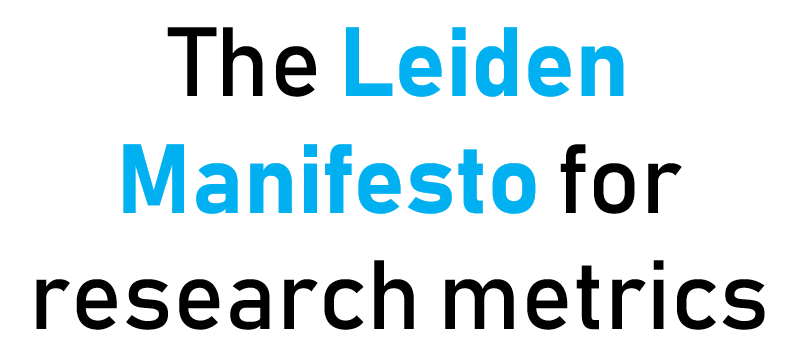Empatia em cães domésticos: o papel do contágio emocional e da oferta de ajuda
DOI:
https://doi.org/10.24215/2422572Xe080Palavras-chave:
cães, empatia, contágio emocional, resgate, ajudaResumo
O contágio emocional é uma forma básica de empatia que ocorre quando um indivíduo compartilha o estado emocional de outro. Avaliar as capacidades empáticas dos cães domésticos (Canis familiaris) em relação às pessoas é de particular interesse, devido ao longo processo de domesticação, à capacidade de formar vínculos com os donos e a importância de experiências ontogenéticas no desenvolvimento da cognição social canina. O objetivo desta revisão é analisar as evidências sobre o fenômeno do contágio emocional em cães e examinar se eles podem oferecer ajuda ou conforto diante do sofrimento de uma pessoa. O contágio de emoções negativas, particularmente o estresse, foi verificado tanto em situações artificiais de laboratório quanto em situações ecológicas de interação entre cães e donos. A evidência é controversa sobre se eles oferecem ajuda ou conforto; portanto, são necessárias mais pesquisas sobre o escopo dessas capacidades empáticas.
Downloads
Métricas
Referências
Albuquerque, N., Guo, K., Wilkinson, A., Savalli, C., Otta, E. y Mills, D. (2016). Dogs recognize dog and human emotions. Biology Letters, 12(1), 20150883. https://doi.org/10.1098/rsbl.2015.0883.
Albuquerque, N., Guo, K., Wilkinson, A., Resende, B. y Mills, D. S. (2018). Mouth-licking by dogs as a response to emotional stimuli. Behavioural Processes, 146, 42-45. https://doi.org/10.1016/j.beproc.2017.11.006.
Ben-Ami Bartal, I., Decety, J., y Mason, P. (2011). Empathy and pro-social behavior in rats. Science, 334(6061), 1427-1430.
Buttner, A., Thompson, B., Strasser, R. y Santo, J. (2015). Evidence for a synchronization of hormonal states between humans and dogs during competition. Physiology & Behavior, 147, 54-62. https://doi.org/10.1016/j.physbeh.2015.04.010.
Carballo, F., Dzik, V., Freidin, E., Damián, J., Casanave, E. B. y Bentosela, M. (2020). Do dogs rescue their owners from a stressful situation? A behavioral and physiological assessment. Animal Cognition, 1-15. https://doi.org/10.1007/s10071-019-01343-5.
Custance, D. y Mayer, J. (2012). Empathic-like responding by domestic dogs (Canisfamiliaris) to distress in humans: an exploratory study. Animal Cognition, 15(5), 851-859.
De Waal, F. (2008). Putting the altruism back into altruism: the evolution of empathy. Annual Review of Psychology, 59, 279-300.
De Waal, F. y Preston, S. (2017). Mammalian empathy: behavioural manifestations and neural basis. Nature Reviews Neuroscience, 18(8), 498-509. https://doi.org/10.1038/nrn.2017.72.
D’Aniello, B., Semin, G. R., Alterisio, A., Aria, M. y Scandurra, A. (2018). Interspecies transmission of emotional information via chemosignals: from humans to dogs (Canis lupus familiaris). Animal Cognition, 21(1), 67-78. https://doi.org/10.1007/s10071-017-1139-x.
Decety, J., Ben-Ami Bartal, I., Uzefovsky, F. y Knafo-Noam, A. (2016). Empathy as a driver of prosocial behaviour: highly conserved neurobehavioural mechanisms across species. Philosophical Transactions of the Royal Society B: Biological Sciences, 371(1686), 20150077. https://doi.org/10.1098/rstb.2015.0077.
Ford, G., Guo, K. y Mills, D. (2019). Human facial expression affects a dog’s response to conflicting directional gestural cues. Behavioural Processes, 159, 80-85. https://doi.org/10.1016/j.beproc.2018.12.022.
Hare, B., Brown, M., Williamson, C. y Tomasello, M. (2002). The domestication of social cognition in dogs. Science, 298(5598), 1634-1636. https://doi.org/10.1126/science.1072702.
Harr, A., Gilbert, V. y Phillips, K. (2009). Do dogs (Canisfamiliaris) show contagious yawning? Animal Cognition, 12(6), 833-837. https://doi.org/10.1007/s10071-009-0233-0.
Haubenhofer, D. K. y Kirchengast, S. (2006). Physiological arousal for companion dogs working with their owners in animal-assisted activities and animal-assisted therapy. Journal of Applied Animal Welfare Science, 9(2), 165-172. https://doi.org/10.1207/s15327604jaws0902_5.
Huber, A., Barber, A. L., Faragó, T., Müller, C. y Huber, L. (2017). Investigating emotional contagion in dogs (Canisfamiliaris) to emotional sounds of humans and conspecifics. Animal Cognition, 20(4), 703-715. https://doi.org /10.1007/s10071-017-1092-8.
Joly-Mascheroni, R. M., Senju, A. y Shepherd, A. J. (2008). Dogs catch human yawns. Biology Letters, 4(5), 446-448. https://doi.org/10.1098/rsbl.2008.0333.
Jones, A. C. y Josephs, R. A. (2006). Interspecies hormonal interactions between man and the domestic dog (Canisfamiliaris). Hormones and Behavior, 50(3), 393-400. https://doi.org/10.1016/j.yhbeh.2006.04.007.
Katayama, M., Kubo, T. Yamakawa, T., Fujiwara, K., Nomoto, K., Ikeda, K., ... y Kikusui, T. (2019). Emotional contagion from humans to dogs is facilitated by duration of ownership. Frontiers in Psychology, 10, 1678. https://doi.org/10.3389/fpsyg.2019.01678.
Kis, A., Tóth, K., Kanizsár, O. y Topál, J. (2020). The effect of oxytocin on yawning by dogs (Canisfamiliaris exposed to human yawns. Applied Animal Behaviour Science, 223, 104916. https://doi.org/10.1016/j.applanim.2019.104916.
Koda, N., Watanabe, G., Miyaji Y., Ishida, A. y Miyaji, C. (2015). Stress levels in dogs, and its recognition by their handlers, during animal-assisted therapy in a prison. Animal Welfare, 24(2), 203-209. https://doi.org/10.7120/09627286.24.2.203.
Kujala, M. (2017). Canine emotions as seen through human social cognition. Animal Sentience, 2(14), 1.
Lit, L., Boehm, D., Marzke, S., Schweitzer, J. y Oberbauer, A. (2010). Certification testing as an acute naturalistic stressor for disaster dog handlers. Stress, 13(5), 392-401. https://doi.org/10.3109/10253891003667896.
Macpherson, K. y Roberts, W. (2006). Do dogs (Canisfamiliaris) seek help in an emergency?. Journal of Comparative Psychology, 120(2), 113. https://doi.org/10.1037/0735-7036.120.2.113
Madsen, E. A. y Persson, T. (2013). Contagious yawning in domestic dog puppies (Canis lupus familiaris): the effect of ontogeny and emotional closeness on low-level imitation in dogs. Animal Cognition, 16(2), 233-240. https://doi.org/10.1007/s10071-012-0568-9.
Merola, I., Prato-Previde, E. y Marshall-Pescini, S. (2012). Dogs' social referencing towards owners and strangers. PLoS One, 7(10). https://doi.org/10.1371/journal.pone.0047653.
Mills, D., Fukuzawa, M. y Cooper, J. (2005). The effect of emotional content of verbal commands on the response of dogs (Canis familiaris). En D. Mills, E., Levine, E. y G. Landsberg (Eds.). Current issues and research in veterinary behavioral medicine (pp. 217-220). Purdue University Press.
Müller, C., Schmitt, K., Barber, A. y Huber, L. (2015). Dogs can discriminate emotional expressions of human faces. Current Biology, 25(5), 601-605. https://doi.org/10.1016/j.cub.2014.12.055.
Nagasawa, M., Murai, K., Mogi, K. y Kikusui, T. (2011). Dogs can discriminate human smiling faces from blank expressions. Animal Cognition, 14(4), 525-533. https://doi.org/10.1007/s10071-011-0386-5.
Neilands, P., Claessens, S., Ren, I., Hassall, R., Bastos, A. y Taylor, A. (2020). Contagious yawning is not a signal of empathy: no evidence of familiarity, gender or prosociality biases in dogs. Proceedings of the Royal Society B, 287(1920), 20192236. https://doi.org/10.1098/rspb.2019.2236.
Norscia, I., y Palagi, E. (2011). Yawn contagion and empathy in Homo sapiens. PLoS One, 6(12), e28472. https://doi.org/10.1371/journal.pone.0028472
O’Hara, S. y Reeve, A. (2011). A test of the yawning contagion and emotional connectedness hypothesis in dogs, Canisfamiliaris. Animal Behaviour, 81(1), 335-340. https://doi.org/10.1016/j.anbehav.2010.11.005.
Panksepp, J., y Panksepp, J. B. (2013). Toward a cross-species understanding of empathy. Trends in Neurosciences, 36(8), 489-496. https://doi.org/10.1016/j.tins.2013.04.009
Payne, E., DeAraugo, J., Bennett, P. y McGreevy, P. (2016). Exploring the existence and potential underpinnings of dog–human and horse–human attachment bonds. Behavioural Processes, 125, 114-121. https://doi.org/10.1016/j.beproc.2015.10.004.
Pérez‐Manrique, A. y Gomila, A. (2018). The comparative study of empathy: sympathetic concern and empathic perspective‐taking in non‐human animals. Biological Reviews, 93(1), 248-269. https://doi.org/10.1111/brv.12342.
Preston, S. y De Waal, F. (2002). Empathy: Its ultimate and proximate bases. Behavioral and Brain Sciences, 25(1), 1-20. https://doi.org/10.1017/S0140525X02000018.
Romero, T., Konno, A. y Hasegawa, T. (2013). Familiarity bias and physiological responses in contagious yawning by dogs support link to empathy. PLoS One, 8(8). https://doi.org/10.1371/journal.pone.0071365.
Sanford, E., Burt, E. y Meyers-Manor, J. (2018). Timmy’s in the well: Empathy and prosocial helping in dogs. Learning y Behavior, 46(4), 374-386. https://doi.org/10.3758/s13420-018-0332-3.
Scheider, L., Grassmann, S., Kaminski, J. y Tomasello, M. (2011). Domestic dogs use contextual information and tone of voice when following a human pointing gesture. PLoS One, 6(7). https://doi.org/10.1371/journal.pone.0021676.
Schöberl, I., Wedl, M., Bauer, B., Day, J., Möstl, E. y Kotrschal, K. (2012). Effects of owner–dog relationship and owner personality on cortisol modulation in human–dog dyads. Anthrozoös, 25(2), 199-214. https://doi.org/10.2752/175303712X13316289505422.
Schöberl, I., Wedl, M., Beetz, A. y Kotrschal, K. (2017). Psychobiological factors affecting cortisol variability in human-dog dyads. PLoS One, 12(2). https://doi.org/10.1371/journal.pone.0170707.
Silas, H., Binfet, J. y Ford, A. (2019). Therapeutic for all? Observational assessments of therapy canine stress in an on-campus stress-reduction program. Journal of Veterinary Behavior, 32, 6-13. https://doi.org/10.1016/j.jveb.2019.03.009.
Silva, K. y de Sousa, L. (2011). ‘Canisempathicus’? A proposal on dogs' capacity to empathize with humans. Biology Letters, 7(4), 489-492. https://doi.org/10.1098/rsbl.2011.0083.
Silva, K., Bessa, J. y De Sousa, L. (2012). Auditory contagious yawning in domestic dogs (Canis familiaris): first evidence for social modulation. Animal Cognition, 15(4), 721-724. https://doi.org/10.1007/s10071-012-0473-2.
Siniscalchi, M., d’Ingeo, S. y Quaranta, A. (2016). The dog nose “KNOWS” fear: Asymmetric nostril use during sniffing at canine and human emotional stimuli. Behavioural Brain Research, 304, 34-41. https://doi.org/10.1016/j.bbr.2016.02.011.
Siniscalchi, M., d’Ingeo, S., Fornelli, S. y Quaranta, A. (2018). Lateralized behavior and cardiac activity of dogs in response to human emotional vocalizations. Scientific Reports, 8(1), 1-12. https://doi.org/10.1038/s41598-017-18417-4.
Skoglund, P., Ersmark, E., Palkopoulou, E. y Dalén, L. (2015). Ancient wolf genome reveals an early divergence of domestic dog ancestors and admixture into high-latitude breeds. Current Biology, 25(11), 1515-1519. https://doi.org/10.1016/j.cub.2015.04.019.
Sümegi, Z., Oláh, K. y Topál, J. (2014). Emotional contagion in dogs as measured by change in cognitive task performance. Applied Animal Behaviour Science, 160, 106-115. https://doi.org/10.1016/j.applanim.2014.09.001.
Sundman, A. S., Van Poucke, E., Holm, A., Faresjö, Å., Theodorsson, E., Jensen, P. y Roth, L. (2019). Long-term stress levels are synchronized in dogs and their owners. Scientific Reports, 9(1), 1-7. https://doi.org/10.1038/s41598-019-43851-x.
Turcsán, B., Szánthó, F., Miklósi, Á. y Kubinyi, E. (2015). Fetching what the owner prefers? Dogs recognize disgust and happiness in human behaviour. Animal Cognition, 18(1), 83-94. https://doi.org/10.1007/s10071-014-0779-3.
Udell, M., Dorey, N. y Wynne, C. (2010). What did domestication do to dogs? A new account of dogs' sensitivity to human actions. Biological Reviews, 85(2), 327-345. https://doi.org/10.1111/j.1469-185X.2009.00104.x.
Van Bourg, J., Patterson, J. E. y Wynne, C. (2020). Pet dogs (Canis lupus familiaris) release their trapped and distressed owners: Individual variation and evidence of emotional contagion. PLos One, 15(4), e0231742. https://doi.org/10.1371/journal.pone.0231742.
Yoon, J. y Tennie, C. (2010). Contagious yawning: A reflection of empathy, mimicry, or contagion? Animal Behaviour, 79(5), e1–e3. https://doi.org/doi:10.1016/j.anbehav.2010.02.011.
Yong, M. y Ruffman, T. (2014). Emotional contagion: Dogs and humans show a similar physiological response to human infant crying. Behavioural Processes, 108, 155-165. https://doi.org/10.1016/j.beproc.2014.10.006.
Downloads
Publicado
Como Citar
Edição
Seção
Licença
Copyright (c) 2021 Camila María Cavalli, Mariana Bentosela

Este trabalho está licenciado sob uma licença Creative Commons Attribution 4.0 International License.

Os autores que publicam neste periódico aceitam as seguintes condições:
- Autores mantém os direitos autorais e atribuir o direito de primeira publicação para a revista, com a obra registrada sob uma Licença de atribuição Creative Commons (CC-BY) , que permite que terceiros usem o que é publicado sempre que mencionarem a autoria do trabalho e a primeira publicação desta revista.
- Os autores podem fazer outros acordos contratuais independentes e adicionais para a distribuição não-exclusiva do artigo publicado na revista ESTA (por exemplo, incluí-lo em um repositório institucional ou publicá-lo em um livro), enquanto eles indicou claramente que o trabalho foi publicado pela primeira vez nesta revista.
- Autores são permitidos e encorajados a publicar seus trabalhos na Internet (por exemplo, em páginas institucionais ou individuais) antes e durante o processo de revisão e publicação, pois pode gerar alterações produtivas e maior e mais rápida difusão do trabalho publicado (ver The Effect of Open Access).




































